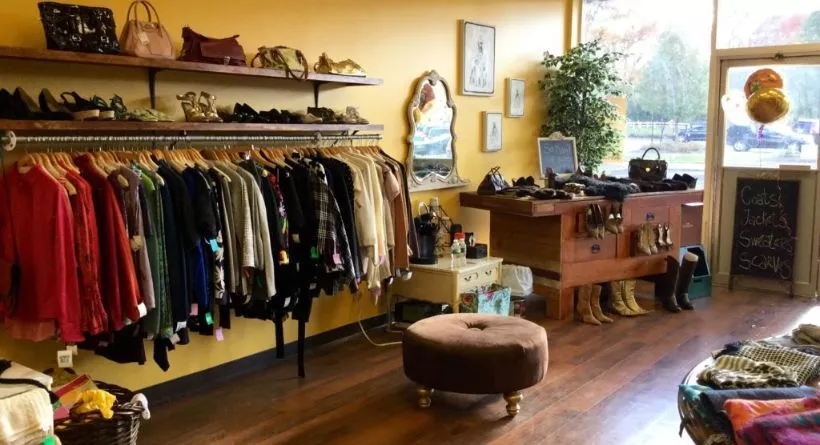If you’ve ever been curious about how to start your consignment shop, you’re not alone. Many would-be entrepreneurs find themselves in the same boat, facing common hurdles such as lack of knowledge, uncertainty about the process, and doubts about profitability. But worry not, as this article promises to unravel the complexities of starting a consignment shop, and guide you step-by-step through the journey. We understand your concerns and have researched thoroughly to bring you the most accurate and effective strategies. So, get ready to turn your entrepreneurial dreams into reality.
Also Read: Demystifying the Press Release Format (+ Free Template)
Understanding the Consignment Shop Business Model

Let’s start with the basics. A consignment shop is a retail store that sells items on behalf of owners, taking a percentage of the sale price as commission. It’s a win-win business model; you get inventory without upfront costs, and sellers get a platform to reach potential buyers.
The benefits of running a consignment shop are plenty. You have the opportunity to offer unique items that appeal to budget-conscious and eco-friendly shoppers. Plus, in an era of sustainability, your consignment shop can be an attractive destination for those looking to recycle their gently used items.
But, as with any business, there can be challenges. Some potential hurdles are stock control, item pricing, and product quality. Yet, these can be managed with careful planning and robust operational systems.
Planning Your Consignment Shop
A crucial first step in planning your consignment shop is identifying your niche. Whether it’s vintage clothing, children’s items, or luxury handbags, defining your niche helps you target specific customers and curate your inventory accordingly.
Next, conduct thorough market research. Understand your competitors, potential customers, and your area’s demand for consignment items. This information is invaluable when shaping your business plan.
Creating a business plan is an essential roadmap for your consignment shop. It outlines your business goals, target audience, marketing strategies, and financial projections. A well-crafted plan not only guides your business growth but also attracts potential investors.
Legal Aspects of Starting a Consignment Shop
Before you open your consignment shop’s doors, you’ll need to address several legal aspects. First, choose a business structure. Whether you opt for a sole proprietorship, partnership, or LLC, your choice impacts your taxes, liability, and business operations.
Next, secure the necessary permits and licenses. These vary by location, so check your local and state regulations. Consulting a legal advisor can ensure you’re compliant and help you navigate this process smoothly.
Setting Up Your Consignment Shop
Finding the perfect location for your consignment shop is paramount. Consider factors like foot traffic, accessibility, and proximity to complementary businesses. Remember, a good location can significantly influence your shop’s success.
Designing your shop layout is another critical aspect. A well-planned layout not only showcases your items but also enhances the customer experience. Ensure your shop is welcoming, organized, and reflects your brand.
Finally, sourcing inventory involves working with consignors who provide items for sale. Cultivate good relationships with your consignors; they are, after all, your shop’s lifeblood. Clear communication about pricing, item condition, and payment terms can foster successful, long-term partnerships.
Marketing Your Consignment Shop

In the digital age, building a strong online presence for your consignment shop is paramount. Establishing a user-friendly website and active social media profiles can help connect you with potential customers and consignors. Sharing engaging content and showcasing unique items can draw attention and build your brand.
Effective marketing strategies are also essential. Consider leveraging SEO techniques, email marketing, and local advertising to spread the word. Partnering with local influencers or hosting community events can also boost your visibility and enhance your reputation.
Running Your Consignment Shop
Efficient inventory management is key to running a successful consignment shop. Implement a system that tracks items from intake to sale, helps price items appropriately, and ensures timely payments to consignors. An organized, transparent system not only streamlines operations but also builds trust with your consignors.
Also Read: The 8 Best Employee Time Clock Apps for Managers In 2023
Building strong customer relationships is another cornerstone of success. Excellent customer service, a loyalty program, or a regular newsletter can help you connect with customers and encourage repeat business. Remember, happy customers often become your best advocates.
Ensuring profitability and growth involves regularly reviewing your business performance. Track your sales, costs, and profits. Adjust your strategies as needed, always aiming for sustainable growth.
Case Study: Success Stories of Consignment Shops
There are many successful consignment shops from which to draw inspiration. Learning from their strategies, successes, and even missteps can provide valuable insights for your business journey. In a future post, we’ll delve into specific case studies and extract lessons that can help your consignment shop flourish.
Potential Pitfalls and How to Avoid Them
While running a consignment shop can be rewarding, it also comes with potential pitfalls. These could include issues such as inventory mismanagement, inadequate marketing, or poor customer service. But don’t worry, we’ll address these challenges and provide strategies to avoid them, ensuring your consignment shop journey is as smooth as possible. Stay tuned!
Conclusion:
Starting a consignment shop can be an exciting entrepreneurial journey. We’ve walked you through understanding the business model, planning your shop, dealing with legalities, setting up, marketing, and running your business. We’ve even peeked at some success stories and explored potential pitfalls. Now, it’s time to turn your consignment shop dream into a reality. Remember, every successful business started with a dream and a plan. With your passion and the insights you’ve gained here, you’re well on your way to creating a thriving consignment shop.
FAQs
1. What is a consignment shop?
A consignment shop is a retail store that sells items on behalf of owners, known as consignors. The shop earns a commission on each sale.
2. What are the benefits of running a consignment shop?
Running a consignment shop can be cost-effective as you don’t have to purchase inventory upfront. It also offers variety and sustainability, attracting customers seeking unique, eco-friendly shopping experiences.
3. What are the legal aspects of starting a consignment shop?
Legal aspects include choosing a business structure, securing necessary permits and licenses, and understanding consignment laws in your area.
4. How can I market my consignment shop?
Building a strong online presence, implementing effective marketing strategies, and building customer relationships is key to marketing your shop.
5. How can I ensure the profitability and growth of my consignment shop?
Implementing an efficient inventory management system, offering excellent customer service, and regularly reviewing and adjusting your business strategies can ensure profitability and growth.
6. What is the business model of consignment?
The consignment business model is a strategy where a store, the consignee, agrees to house and sell products, but the consignor retains ownership of the goods until they’re sold. The consignee only pays the consignor when the items are purchased by customers. It’s a model that reduces the risk for the store, as they don’t need to buy inventory upfront.
7. How do you profit from consignment?
Profits in a consignment shop are made through commissions on sales. When an item is sold, the consignment shop retains a pre-agreed percentage of the sale price as its fee, typically ranging from 25% to 60%. The remainder goes to the consignor. As the shop owner, you don’t pay for the items until they are sold, thus reducing the financial risk and overhead costs.
8. What is consignment basic?
Consignment basics involve a contractual agreement between two parties: the consignor and the consignee. The consignor owns the goods and gives them to the consignee, who sells the goods on their behalf. Payment is made to the consignor only when the goods are sold. This model is popular in industries like fashion, furniture, books, and art.
9. How do I promote my consignment shop?
Promoting your consignment shop can be achieved through various marketing strategies. Start by building a robust online presence with a user-friendly website and active social media profiles. Regularly update your platforms with new inventory arrivals and promotions. Offline, you can use traditional methods such as flyers, local newspapers, and networking events. Collaboration with local businesses and participating in community events can also increase visibility. Finally, word-of-mouth marketing is powerful – happy customers can become your best promoters.

